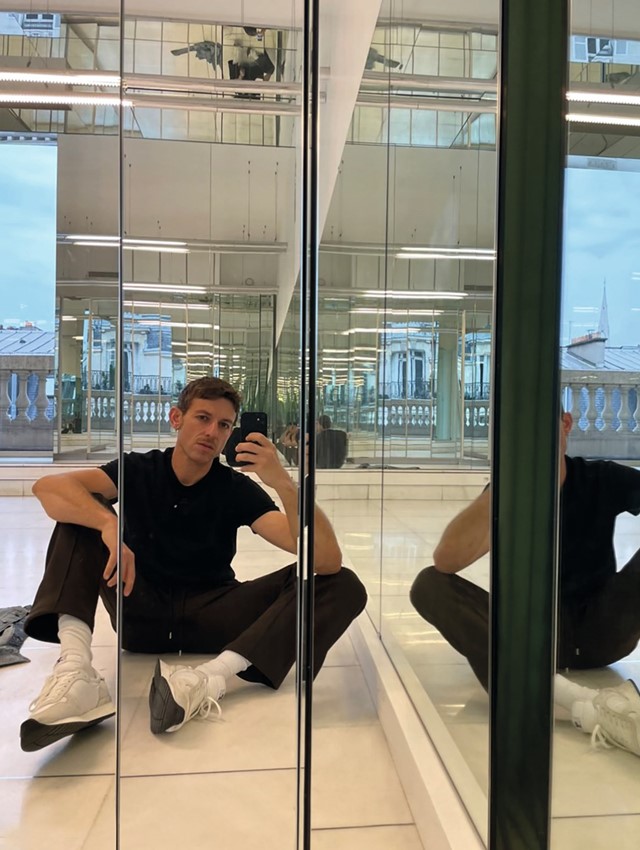Courrèges’ creative director remembers the country’s electrifying club scene in the 80s and 90s, and reflects on how it inspires his work today
This article is taken from the Autumn/Winter 2021 issue of AnOther Magazine.
“There is this documentary that I love, from 2012 – The Sound of Belgium, about the Belgian clubs that had a huge influence on music between 1985 and 1995. It became mainstream, the Benelux techno sound, the new beats. I really lived it. What I love is that it shows lots of passionate people and how they made this new sound – disco arrived, then punk. In the documentary, you see how it develops, this music with a cold wave, punk attitude but with a disco sound. The bass was more rounded, more heavy. The first club dedicated to this was called Boccaccio – it was like a temple. It was mirrored, like Studio 54, but playing this dark, heavy sound inside. All this, in the Belgian countryside – my friend lived a kilometre away from one of the biggest clubs and every weekend there would be strangers in her garden, it was all a bit surreal. Music, lights, in the middle of nowhere – at night, there were these lasers coming from huge clubs. It was like Batman. And it inspires me – in my work, I always think something is more powerful when you decontextualise it.”
37-year-old Nicolas Di Felice has come a long way from the Belgian countryside outside Charleroi where he grew up and began clubbing at the age of 13. Having studied at La Cambre, he worked alongside Raf Simons and Pieter Mulier at Dior and then Nicolas Ghesquière at Louis Vuitton before receiving the call inviting him to helm the storied house of Courrèges – a long-term inspiration. Working at a brand with one of fashion’s most influential and well-known aesthetics makes Di Felice’s task doubly difficult, requiring him to satisfy fanatics while evolving a new, 21st-century identity. Three collections in, his offerings include gentle tailoring and sportswear, alongside the painstakingly precise, Persil-white space race futurism that still defines the label. He’s also been diving into the archives – learning about the man behind the name. “André Courrèges was obsessed, even more than walking on the moon, with dressing people on the street,” he says. “That talks to me a lot.”
This article appears in the Autumn/Winter 2021 issue of AnOther Magazine which is on sale now. Head here to purchase a copy.
